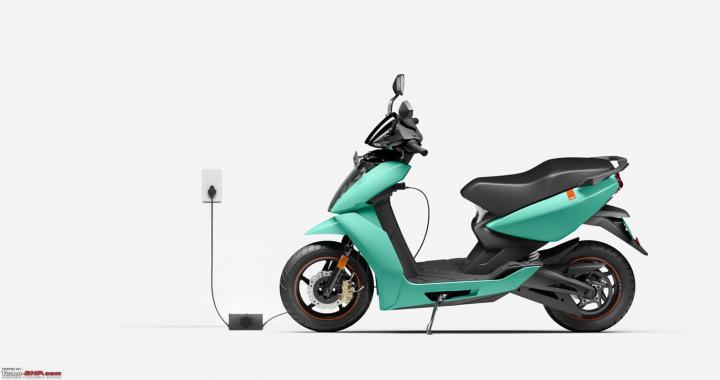News
2021 Ola S1 Electric Scooter : 7 Pros & 7 Cons
The Ola S1 is the first product from a startup giant and performance is certainly the most important aspect to test. Still running a Beta version of the software and with ongoing improvements, there were some rough edges, but the overall experience was good enough to state with confidence that petrol engine competitors really need to pay attention to this electric rival.
Ola S1 Pros
- India’s first mass-produced electric vehicle. A market disruptor with solid potential
- Looks futuristic, sleek, yet classy enough to appeal to all and offend none. Build quality, colour options on offer and the feel of materials is good for the segment too
- Well priced for the best-in-class specs on offer. Better performance than any mass-market scooter on sale in India
- Worry-free range for daily runs - ARAI-certified range of 121 km for the S1 and 181 km for the S1 Pro as per IDC
- Loaded with technology and features - large touchscreen and connected features, keyless access, reverse assist, onboard navigation, hill hold (Pro), cruise control (Pro) and more
- Deliveries claimed to start parallelly in 1,000+ cities across the country. No (customer-facing) dealership model is great on paper. Home delivery and service with predictive maintenance for items like brake pad wear
- Committed hyper charger network looks impressive on paper - 400+ cities, 1,00,000+ charging points and 75 km of range topped up in 18 minutes
Ola S1 Cons
- Over-optimistic initial timelines have been missed a few times already
- Some major misses (ABS, flat floorboard, removable battery pack, pillion side footrest, etc) could be a deterrent in achieving the ambitious sales targets
- As on the day of our tests, the product feels rushed into production and a lot more fine-tuning of the power delivery is required for a perfect riding experience (media drive bikes were still running beta software)
- Many of the headline features are still in beta (some even alpha) testing stages and will be delivered to customers slowly via OTA updates. Initial customers will need to be patient
- Despite being priced well, the S1 is still significantly more expensive than the ubiquitous volume-seller, the Honda Activa (without state subsidies, where applicable)
- Concerns over the effectiveness of the new dealerless support model, especially in semi-urban and rural areas. The first point of contact for customers is the OLA Electric App / customer care call centre
- Concerns over initial niggles and longevity of a brand new, mass-manufactured product from a startup company
Read Team-BHP's Detailed Ola S1 Electric Scooter Review.
News
Hero MotoCorp to launch its electric 2-wheeler by March 2022
Hero MotoCorp's electric 2-wheeler will be manufactured in Chittoor, Andhra Pradesh.
Hero MotoCorp has confirmed its plans to launch an electric 2-wheeler in the Indian market.
Hero MotoCorp's electric 2-wheeler project is in the advanced stages. It will be manufactured at the company's Chittoor plant in Andhra Pradesh. The new product will be launched by March 2022.
Hero MotoCorp's Chittoor factory is said to be eco-friendly and employs sustainable manufacturing practices. The company will also develop an integrated ecosystem for battery pack manufacturing and testing, vehicle assembly and vehicle end of line testing (EOL).
The bike maker has also announced its financial results for Q2 FY2022. The company's total sales volume was up by 40.4% to 14.38 lakh units. Net revenue grew by 54.1% to Rs. 8,453 crore, while net profit stood at Rs. 794 crore.
Image source: 91wheels
News
Ola S1 and S1 Pro e-scooter test rides start
Ola S1 and S1 Pro e-scooters are available for a test ride in Delhi, Kolkata, Ahmedabad and Bangalore.
Ola Electric has started offering test rides of its S1 and S1 Pro electric scooters from November 10. However, test rides are only available in Delhi, Kolkata, Ahmedabad and Bangalore.
At present, test rides are being offered to those who have booked an S1 or S1 Pro electric scooter. Customers will have to book a slot at their nearest Ola test ride camp to have a go on the e-scooter.
Test ride camps have been set up at Forum (WeWork) in Cyber City, Gurgaon, South City Mall, Kolkata, Himalaya Mall, Ahmedabad and at Prestige Cube Laskar in Bangalore.
Ola will roll out test rides in other cities across India in the coming weeks.
News
Rumour: Suzuki Burgman electric scooter launch on November 18
When launched, the Suzuki Burgman electric scooter is likely to compete with the Bajaj Chetak, TVS iQube, Ola S1 and the likes.
Suzuki has sent out a media invitation which reveals that the company will unveil a new product on November 18, 2021. However, exact details regarding the upcoming two-wheeler have not been shared by the firm. Media reports suggest that it could be the Suzuki Burgman electric scooter.
Suzuki has been testing the Burgman electric scooter for quite a while now. There have been multiple sightings of the prototypes in the past.
The electric scooter will be based on the petrol-powered Suzuki Burgman Street. Some of its expected features include a fully digital instrument cluster with Bluetooth connectivity, full-LED lighting, a USB charger, and large under-seat storage.
It is being said that the Burgman electric scooter could be equipped with a 4.4 to 5.0 kW motor that would provide performance equivalent to that of a 110cc petrol-powered scooter. The expected range of the EV is 70-90 km.
When launched, the Suzuki Burgman electric scooter is likely to compete with the Bajaj Chetak, TVS iQube, Ola S1 and the likes.
Source: Zigwheels
News
Ola plans to launch a more affordable electric scooter
Ola Electric forayed into the electric 2-wheeler segment with the S1 and S1 Pro e-scooters.
Ola Electric plans to expand its product portfolio by introducing a more affordable electric scooter. The company also has plans to launch an electric bike.
Ola Electric forayed into the electric 2-wheeler segment with the S1 and S1 Pro e-scooters. With a base price of Rs. 99,999, the S1 could be out of reach for most individuals. The company realizes this and plans to launch a cheaper version with fewer features.
The more affordable version of the S1 e-scooter could get a smaller battery and a less powerful electric motor. The scooter might also miss out on features such as cruise control, touchscreen instrument cluster, etc.
At present, the Ola S1 comes with a 2.98 kWh battery pack that powers a 'Hyperdrive motor' that has an output of 11 BHP and 58 Nm. It has a maximum range of 121 km.
Source: Zigwheels
News
How to charge your electric vehicle at your apartment
Electric vehicle owners residing in high-rise apartments, societies, etc., are facing the biggest challenges when it comes to charging their EVs.
BHPian shortbread recently shared this with other enthusiasts.
While the EV revolution is upon us, the prospective owners facing the biggest challenges in India are the ones residing in tall apartment blocks, building societies, etc.
While an immediate stop-gap measure would be to set aside a few parking spots for EV charging vendors, some builders like Lodha have already announced such plans. The big question is how do they allocate individual charging points for each flat?
The challenges are many
- Simply getting the building associations/committees/owners to come to an agreement itself is a huge stumbling block. A clash of opinions, ideas, priorities means that getting a plan in place is nigh on impossible. Some will have the foresight while others will be stubbornly against it.
- Getting the necessary approvals from responsible authorities, electricity boards, etc.
- The costs of engineering charging points at individual parking spots. This will be expensive and will need considerable collective contributions to make this possible.
- Deciding on the supplier. Whether to attach this with one's current electricity bill, or a new EV charging provider etc.
What solutions are available to resolve such a challenge? Perhaps, seeing a few successful examples will set a template for others to follow.
Here's what GTO had to say about the matter:
Once you get down to it, an EV charging port at home is very simple. I recently did up my driveways and installed 6 EV charging outlets to make my compound "future-ready".
Fast-charging is the complicated one and that's best left to commercial outlets or public facilities in my opinion. For home charging, a regular (slower) EV charging port will do just fine because the best time to charge your EV is overnight, while you are sleeping in bed and the car is parked at home. Like how most of us charge our smartphones.
All you need is simple wiring & a 15 A socket (the kind you'd use for heavy home appliances). A good electrical contractor & a willing society can install a slow charging port in a day. Societies & housing associations will come around once more & more of their residents buy EVs. Sharing my learnings here.
Individual meters are best. Each person should pay for his "own fuel". Ideally, your line would be taken from your home electricity meter.
Here's what BHPian Early_Adopter had to say about the matter:
I live in a high rise apartment complex in Hyderabad with about 1500 apartments with 3 levels of car parking.
I went through a lengthy process of installing a 7.5kW single-phase AC charger for my EV at my parking slot. This involved multiple stakeholders - the Management Committee of our society, the local Discom, the dealer (MG) and the contractor of MG who is authorised to install the charger. The cost of the charger and the installation (including the cabling) is included in the car price.
I finally got the charger installed negotiating my way through the process with all these stakeholders and, of course, with some luck too.
This involved laying a cable of 100 meters from the LT panel where my meter is located to my allocated parking slot.
As luck would have it, my sanctioned load is 10kW (3-Phase) and my RMD was about 2.4kW - so there was no need to upgrade the sanctioned load.
But, due to stringent processes set out by MG, the contractor refused to install the charger unless the wiring inside the LT panel upgraded from the current 6 sq mm to 10 sq mm. The society refused to undertake the wiring without permission from the local Discom. I wrote letters, spoke to the Discom personnel and finally, they approved the upgrade with a physical inspection.
Thanks to the local dealership team who obtained MG's permission to lay 100 meters of 16 sq mm cable through the cable ducts, shafts and galleys and some supportive folks in the management committee of our society - the work was finally done.
Having gone through this experience, I offered my volunteering service to our society for future installations and I also suggested a roadmap for the future - wherein, first 20-30 EV owners will lay the cables to their individual slots (but sticking to the process), identifying common charging points to install AC slow chargers (a combination of 15A sockets, 3.2 to 7.5kW chargers) in phase -2, followed by installation of DC fast chargers in phase-3.
Overall, the process is lengthy especially in large apartment complexes and there's less awareness as to how to handle the exceptions. A bit of perseverance combined with supportive stakeholders will make this experience smooth for future installations.
Here's what BHPian Rajeevraj had to say about the matter:
The best approach would be points tied to the individual meter. This is mostly easy to do and only requires a willing society. It cannot be tied to a common or a commercial meter. At least in Karnataka, as far as I know, the common meter for the society falls under a different category and power is charged at a significantly higher cost per unit as opposed to individual home meters. So a common point will incur higher charges for the owner.
In addition, in a home location scenario, everyone would want to charge overnight. So even if 3-4 points are installed, it will become unsustainable soon. Such public charging points work best in public locations like malls, highway stop points, etc.
One more point to add is that in apartment complexes, whether small or large, parking is already a premium and getting properly covered parking itself for all residents and having adequate visitor parking itself is a challenge. So dedicating additional space for EV charging is unlikely to be feasible.
One thing that builders should do for new properties going forward is to plan for enabling lines to individual parking slots so that those who want a charger set up can easily do it. Should be part of the 'amenities' list builders market.
Here's what BHPian Axe77 had to say about the matter:
For context, I live in a large apartment complex (~500 apartments) in Mumbai, spread across a reasonably large area with parking split across two underground car park levels. We have the rare benefit of a fair amount of surplus parking that is under the control of our society.
Currently
Society is still evaluating long term charging needs. Until then, they have put simple 15 AMP charging points at a few locations and will continue to increase the number of such locations as and when new owners come up with EVs. The current mechanism is a flat fee of INR 1000 per month to be able to charge your registered EV at one of these points whenever needed. If you want a scooter the flat fee would be Rs. 500 per month. This is just a temporary charging and fee solution (back of the envelope calculations on cost I guess) pending us getting our long term solution in place. I think there are barely 2 - 4 EVs at present in our society, availing this feature. One is a Reva and one MG ZS - not sure what others, if any.
Eventually
Most likely we will have an external service provider that will provide some sort of an app-based solution with a corresponding rate which will be like an AC slow (but faster than above) sort of charging solution. I am hoping what this will translate to is a reasonable (ie. Not public charging infra prohibitive) cost solution that is administered and managed by a third-party provider. There are a number of third-party providers who are pitching for such solutions, with conventional power cos like Adani and Tata just being one end of the spectrum but many other smaller players too.
I doubt (but can’t rule out) that it “might” also have a few DC fast chargers but I don’t think this should be an essential requirement. Perhaps, if they do that it might have a higher rate for this facility.
What we won’t do
I am reasonably certain that what we won’t do is be pulling wires from our individual meters into our “own” parking spots so it can bill on our own home meters. Logistically that is just not feasible I believe.
Here's what BHPian srini1785 had to say about the matter:
Every house connection has a Sanctioned load and a Connected load component. In Karnataka, for a Single-phase 230V connection, the max Sanctioned load is up to and not above 5kW.
Following is as per the information available:
3.2 Classification of Supply
At 230 V., Single Phase
- All installations (other than motive power) up to & inclusive of 5 KW of sanctioned load.
- Motive power installations up to & inclusive of 4 KW of sanctioned load.
- Public lighting system up to 10 K.W.
My understanding is that normally the sanctioned load (at least in Bangalore) is not more than 1.5Kw for residential buildings. Your connected load SHOULD be lower than this value. Connected load is the peak power that you draw from your meter. If it exceeds the Sanctioned load you are liable to pay a surcharge. BESCOM usually takes an additional deposit too if you regularly cross this value.
The sanctioned load has a direct impact on the fixed charges that you pay monthly. So if you add an extra EV point then you are adding an extra load on the existing meter. If now the connected load crosses the limit of the Sanctioned load then you are liable to pay an extra surcharge. In order to avoid this surcharge, you can apply for an enhanced Sanctioned load and depending on the infra in your locality like the load on the street distribution transformer, availability of poles etc, the state DISCOMS would or would not provide that extra Sanctioned load to you. Contrarily, you can also surrender the extra KW in your Sanctioned load and go for lower fixed charges.
The above (rather lengthy) explanation is provided to understand how electricity infra works. Now, in a big-gated apartment complex, it would be much easier and better to request for an extra HV line and provide EV charging via that connection rather than loading your existing metered points. The advantage is that fast charging is possible with dedicated infra. If you connect a fast charger to your existing meter, you are going to blow some fuses.
Of course, it all depends on how many of the residents have or are going for an EV. HV connections are not cheap, infra alone would cost around 7-10 Lakh.
Being an apartment dweller myself, I can fully understand what that means.
Check out BHPian comments for more insights and information.
News
Ola Electric to reopen bookings on December 16
Ola electric scooters are priced from Rs. 99,999 and compete with the Ather 450, Bajaj Chetak and the TVS iQube.
Ola Electric has announced that the second purchase window for its S1 and S1 Pro electric scooters will open on December 16, 2021.
Ola Electric launched its first e-scooter range in India on August 15. The first booking window was opened on September 15. The company had initially planned to reopen bookings from November 1, but has now pushed it to mid-December.
The base S1 comes with a 2.98 kWh battery pack that offers a maximum range of 121 km. It powers an electric motor that has an output of 11 BHP and 58 Nm. The S1 Pro uses a 3.97 kWh battery that delivers a maximum range of 181 km on a single charge.
Ola electric scooters are priced from Rs. 99,999 and compete with the Ather 450, Bajaj Chetak and the TVS iQube.
Thanks to BHPian SKC-auto for sharing this information with other enthusiasts!
News
Ola electric scooter production commences
Ola Electric has also confirmed that the test rides of its electric scooter will start from November 10.
Production of the Ola electric scooter has commenced. The company has shared a video on Twitter giving us a glimpse of the same.
Also, replying to a tweet, Ola Electric has confirmed that the test rides of its electric scooter will start from November 10.
Ola Electric launched the S1 and S1 Pro electric scooters earlier this year. The former is priced at Rs. 99,999 whereas the latter costs Rs. 1,29,999 (ex-showroom).
The Ola S1 model has a 2.98 kWh battery pack that powers a 'Hyperdrive motor' which is capable of delivering an output of 11 BHP and 58 Nm. This variant of the electric scooter has a maximum range of 121 km and takes 4 hours 48 minutes for a full recharge via a conventional charging port.
The Ola S1 Pro is the higher-spec variant. It comes with a 3.97 kWh battery pack and has a maximum range of 181 km. Since the battery is bigger, it takes a bit longer to fully recharge - 100% in 6 hours 30 minutes using a conventional charging port.
News
Hero MotoCorp to use Ather Energy’s fast charging tech
Ather Energy had made its fast-charging connector tech public in August 2021. Hero MotoCorp has become the first major OEM to adopt this tech.
Hero MotoCorp is going to use Ather Energy’s proprietary fast-charging connector technology. The two-wheeler giant is likely to implement this tech in its electric scooters, however, the company is yet to enter the E2W segment.
Ather Energy had made its fast-charging connector tech public in August 2021. Since then, the EV-maker has received interest from multiple players in the market. Hero MotoCorp has become the first major OEM to adopt this tech.
Hero MotoCorp owns a 35% stake in Ather Energy. However, when it comes to developing electric two-wheelers, both companies have been working independently. While Ather Energy has been in the E2W segment for quite some time now, Hero MotoCorp is yet to make its first move.
Hero MotoCorp did tease its first electric scooter earlier this year. The company is expected to launch the E2W in the first quarter of 2022.
Source: Car and Bike
News
Fraudsters taking fake bookings for the Ola E-Scooter
The fraudster promised my friend that 'you can easily get the S1 Pro within 3 weeks if you pay 50% now & 50% at the time of delivery.’
Harshal A. Naik recently shared this with other enthusiasts.
Hi,
The attached pic is the fake invoice received by my friend who is desperately willing to buy an Ola e-scooter.
After reserving S1 Pro, he was searching on Google about the delivery schedule. There he jumped onto a fraud link & received a quick call.
The fraudster promised my friend that 'you can easily get the S1 Pro within 3 weeks if you pay 50% now & 50% at the time of delivery.’
And he received this invoice copy & he asked me to cross-check.
I immediately told my friend that this is a very, very fake invoice & do not open any link & do not pay any amount.
We can see in the attached pic:
- Company name is wrong. The company’s legal name is - Ola Electric Mobility Pvt Ltd.
- Company address & pin code is wrong/mismatching.
- GST no. is wrong. It should be 15 digits & not 16.
- Most importantly, how come any company will deliver expensive stuff like automobiles on a "COD basis"?
This is very much kind of a 'Jamtara Online Scam Module' now targeting Ola e-scooter customers. And these guys are happy even if they get 2-3 thousand Rupees.
Here's what BHPian Rajeevraj had to say about the matter:
Wow. I don't understand why there is so much hype about the Ola E-Scooter. Of course, it is a great initiative and has the potential to be an inflection point in the Electric Scooter Landscape. Having said that, it is a new product from a company doing this for the first time and as far as I have seen, does not have anything path-breaking over say what an Ather offers today. The constantly shifting test drive and delivery schedules is a clear indicator that Ola is working through some challenges before they are ready to scale out.
Glad that this scam has been quickly brought to light. Hope Ola also clearly puts out some messaging around this and also keeps the potential customers regularly informed about the status.
I may be wrong here, but the marketing blitz around E Scooters seems to have created an impression that it is a revolutionary new form of transportation. Hope all customers make themselves clear on what an E Scooter offers and what it cannot before committing to the purchase.
Here's what BHPian abhishek46 had to say about the matter:
My First question would be, why so much 'desperation' to get an Ola S1 scooter?
It’s not like it is the 'only' form of transportation, in existence today.
I understand, it has some good specs & runs on a battery.
I also understand that a lot of interested people have booked the vehicle by paying a small amount.
So, why not wait a bit, and let the manufacturer do its job.
Check out BHPian comments for more insights and information.
Pages



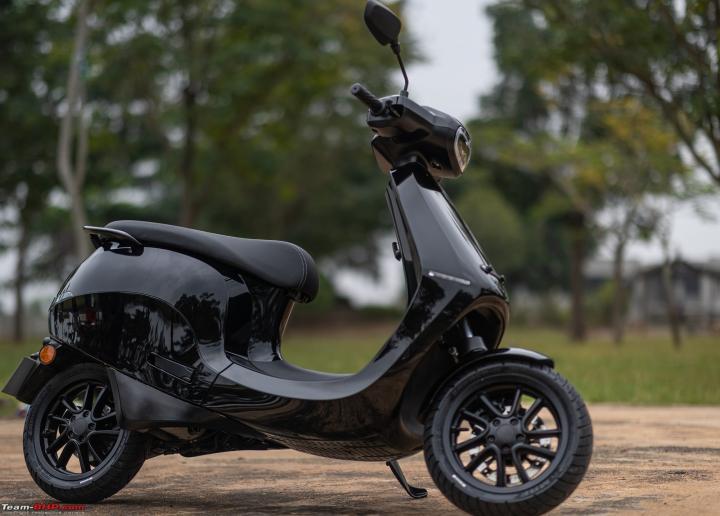
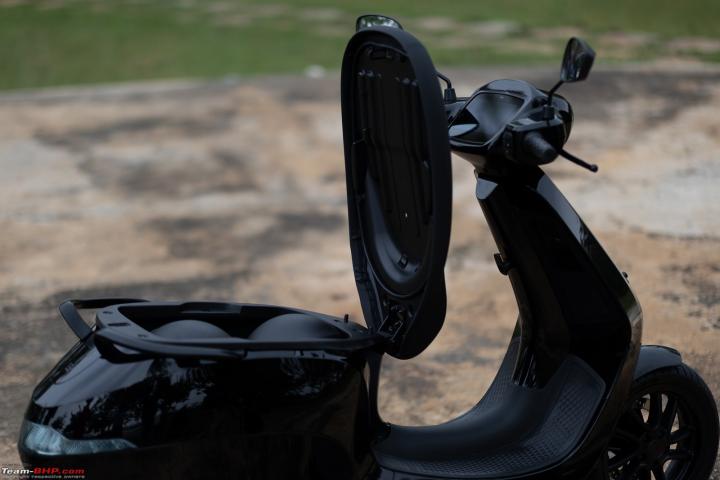
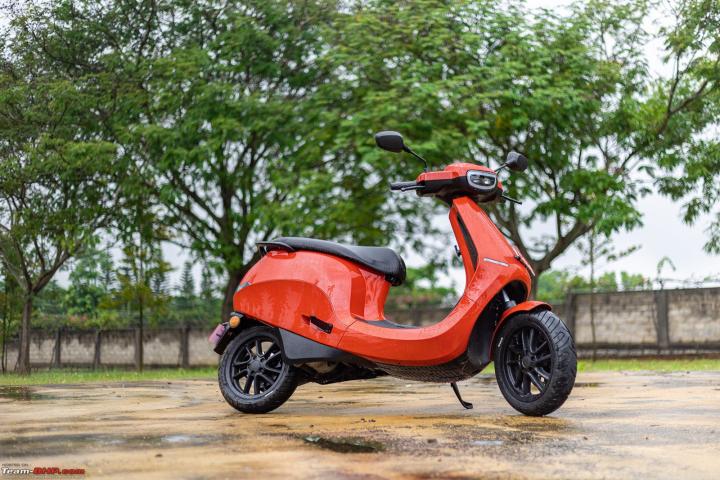
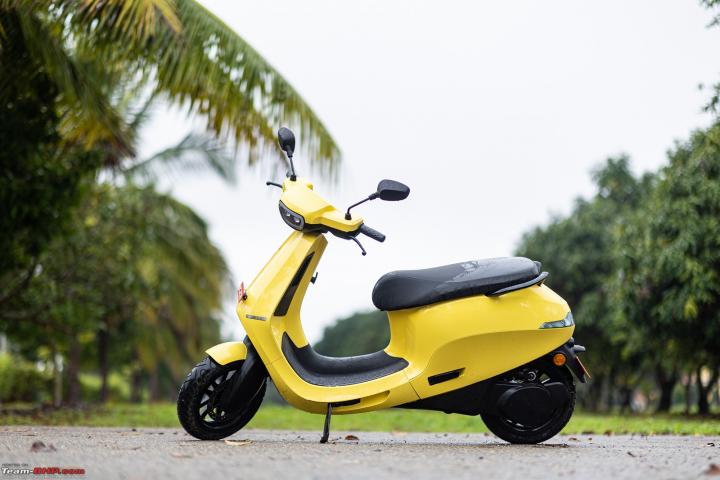





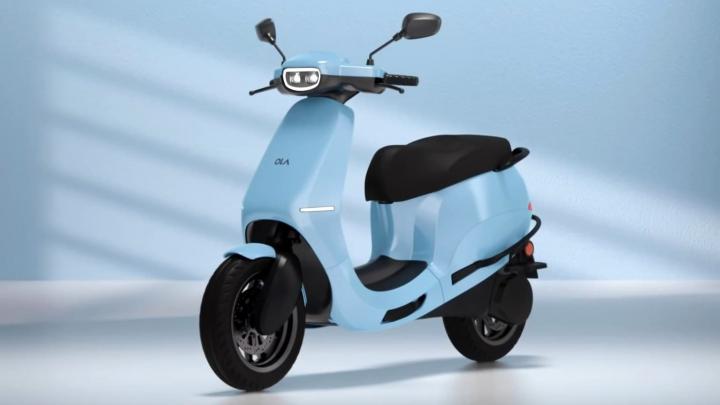





_2.jpg)
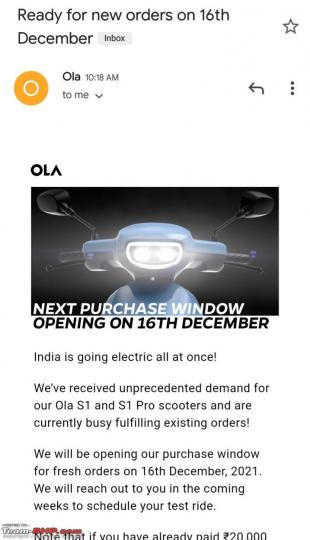
_2.jpg)





